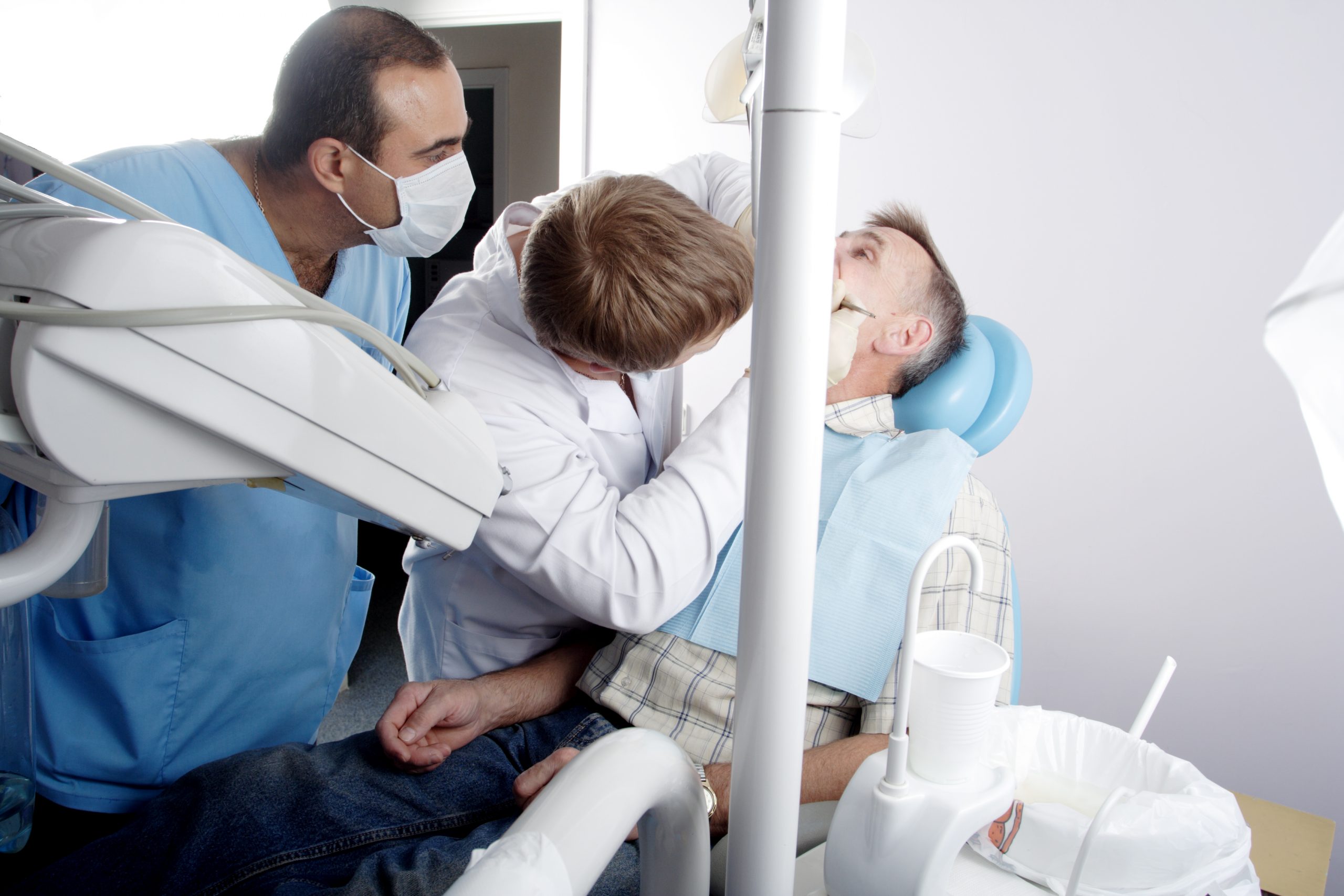 You’re an employed physician in a small practice and all the practice revenue comes from treating patients in your office and in hospitals. You’ve been offered an opportunity to become an owner in the practice and you’re not sure how to view it.
You’re an employed physician in a small practice and all the practice revenue comes from treating patients in your office and in hospitals. You’ve been offered an opportunity to become an owner in the practice and you’re not sure how to view it.
Here is what is happening with medical practices, value-wise. The values are the lowest in 25 years. A buy-in, for instance, typically consists of only the following: the fixed assets (usually a lower “book” value) and whatever your share of the receivables is (typically not purchased). The only additional amount paid is for the “good will” or “going concern” value when the practice generates “passive revenue,” such as physical therapy or diagnostic imaging. That means medical practices aren’t worth much and no one is really lining up to buy them.
So then why would an “older” or more established doctor bring someone in? First, you must know that the growth of practices has slowed a lot with the economy issues. Second, owners hope to (1) have a better lifestyle, (2) find someone to generate a profit until they insist on being an owner, (3) find someone who can share overhead expenses, and (4) find someone who can pay them to own a portion, then buy them out when they’re ready to retire. Without some younger physician on track to become an owner, older physicians really have (1) no way to make a profit, (2) no way to slow down, (3) no one to share overhead with, and (4) no one to buy their practices, which many thought would be their retirement money.
Once you agree on it, how does the purchase price get paid? Typically, buy ins are paid for in whole or in part via a salary offset so that you pay for it on a “pre tax” basis, meaning that the founder gets the money before you receive it. That way, for instance, you don’t have to generate $140K worth on income, pay taxes and have only $100K left over to pay the founder.
With all of this in mind, you need to know what the “standard” arrangement for buy-ins is. The employer will employ someone for 2-4 years before offering them ownership. When ownership is offered, here’s what the structure usually looks like (about 90% of the time, in my experience)—
1. The purchase price consists only of the depreciated value of the fixed assets;
2. Since there is no “passive” revenue, there is nothing added to the purchase price;
3. The purchase price is paid for in a combination of pre tax and post tax, meaning you write a check for some of it when you sign the documents (post-tax), and the rest is paid for on a salary offset (pre-tax);
4. The employee “leaves” his receivables, meaning whatever profit remains from his/her services stays with the employer and the employee/new owner starts accruing receivables from 0;
5. If there is a noncompete involved (there is about 50% of the time), it exists only when the buy in is being paid, unless all the owners are bound by one;
6. You become an equal owner right away;
7. You become a board member right away;
8. The “founder” has control over a select list of issues, typically in a tie breaker voting fashion;
9. The overhead is allocated between the owners on some combination of equally and based on their relative productivity (collections);
10. Income is typically on an “eat what you kill” basis;
11. Employment agreements are exactly the same (except for the noncompete during the buy in); and
12. In the rare event that someone receives extra compensation for management (maybe 20% of the time), the fees are about $50K/year.
More specifically—
The practice. practices typically only have one class of owners. If there are two specified, this may mean the income is double taxed. This is something you and your accountant need to discuss. This is nearly unheard of in this day and age (and for at least the past 15 years). As mentioned, owners are typically treated as equals, except with respect to the buy in and occasionally a noncompete during the buy in period.
Amount of stock. The amount of stock given to you means nothing in terms of how much each person makes. Stock pertains to how much profit will be distributed and how much each would receive if the practice was sold (not happening). Why? Because the issue of how much a person receives from practicing medicine is nearly always an issue of compensation (addressed in the employment agreement). A person could own 99% of the P.A. and only receive 1% of the income. Ownership and compensation have nothing to do with one another.
More stock. I have seen very few circumstances where the younger doctor received less than equal shares initially. There was, however, an escalator provision in the shareholder agreement that allowed him to get more so he would be equal once the income hit a certain target. Though this is an odd provision for a medical practice (for the reasons described—ownership does not = money), it certainly could be employed.
Direction and control. I have never seen a circumstance where a younger physician who becomes an owner is not on the board and has no say in any issues affecting the practice. I have, however, seen circumstances where the older physician has the deciding vote on such things as (1) whether to bring in a shareholder, and (2) whether to sell the practice.
Compensation. Here’s what I’m most accustomed to—each owner has income attributed to him/her and expenses allocated. For instance, against $1M in revenue, there might be “direct” expenses of $50K (e.g. automobile, health insurance, professional dues and such, entertainment); and “indirect” expenses (overhead) allocated some of it equally and some of it on the basis of productivity, meaning the one who earns more pays more of these expenses. The second most common arrangement is to split everything equally.
Extra money to the founding physician. It is rare, as described above. When it is done, they are set at some reasonable, flat level.
Employment contract differences. Never seen it. When one becomes an owner, there is the real and emotional issue of equality. Owners insist on it, though they understand that those who bring in more money receive more income.
Termination without cause. Here’s how I see it being handled—(1) it applies to all owners and generally requires the approval of a supermajority of the owners (when each owner has an equal vote); or (2) there is none. One can be terminated for cause only.
Malpractice. Practices (1) go bare; or (2) pay for each owner’s $250K/$750K coverage and tail; or (3) require it and allocate the expense to each owner.
Buying out. The most common thing in practices is that retiring owners walk away with their share of the fixed assets (on a depreciated basis) and their receivables. If by that time you have passive revenue sources, such as an MRI in the practice, then typically you would pay an anticipated portion of those profits to him for some period of time (no more than one year). The shares are bought for maybe $1/share. The value of the medical practice is the ability of a physician to earn a living while there. That’s really all there is in today’s market. When you remove the physician, the value goes away with them, since there is no one to pay the overhead and no one to generate patient referrals. Disability is typically handled the same way, though death usually comes with it life insurance, which passes through to his estate and “pays for” his shares.
Now, let’s take a step back: why are you becoming an owner? If it does not appear that the employer wants you to be one, you have to ask whether it make sense. What do you receive for becoming an owner? Do you get more out of being an owner than being an employee? Does not make more sense to just respond by saying “Hey, I realize you don’t really want me to be an owner, so why not just keep me as an employee and give me [a raise]?”
How to look at these opportunities. Very simple. With people who have lots of experience. That usually means an accountant and a lawyer. Even then, you have to understand how to approach these opportunities. There are three stages: (1) discussions; (2) agreements; and (3) negotiation. Many physicians think you just get legal documents and hire someone to review them. This doesn’t make any sense because you could read them yourself and see whether or not they reflect your business understanding or expectation. You have to have detailed conversations (away from patients) to see if you are conceptually even on the same page; and you ought to consult with experienced professionals in this stage or you may miss an important conceptual issue. Only once you are sure that you see eye to eye does it make sense to look at documents.
When you get the documents, be prepared for them not to read they way you expected. Miscommunication between lawyers and clients is common and some clients and/or lawyers, as a way of negotiating, intentionally provide documents that don’t reflect the deal. The best way to use your hired consultants is for you to review the documents first and to discuss with the employer any discrepancies you notice. Only then should you have the lawyer and/or accountant provide their detailed comments.
Finally, you have to remember that the deal is yours. Once the accountants and lawyers are gone, you still show up every day and “live” in that practice. For that reason, you have to maintain your composure. The buy in process is a process and it can be upsetting in moments. Focus on practicing medicine and let your advisors advise you. At the end of the day though, you have to make the decision about what’s best for you, not your lawyer or accountant. Let them advise you, but don’t let them drive the bus.
FHLF Attorney Jeff Cohen recently presented a live webinar on the topic of “Physicians Becoming Employed.” You can download a copy of his informative presentation here!
 By: Chase Howard
By: Chase Howard



